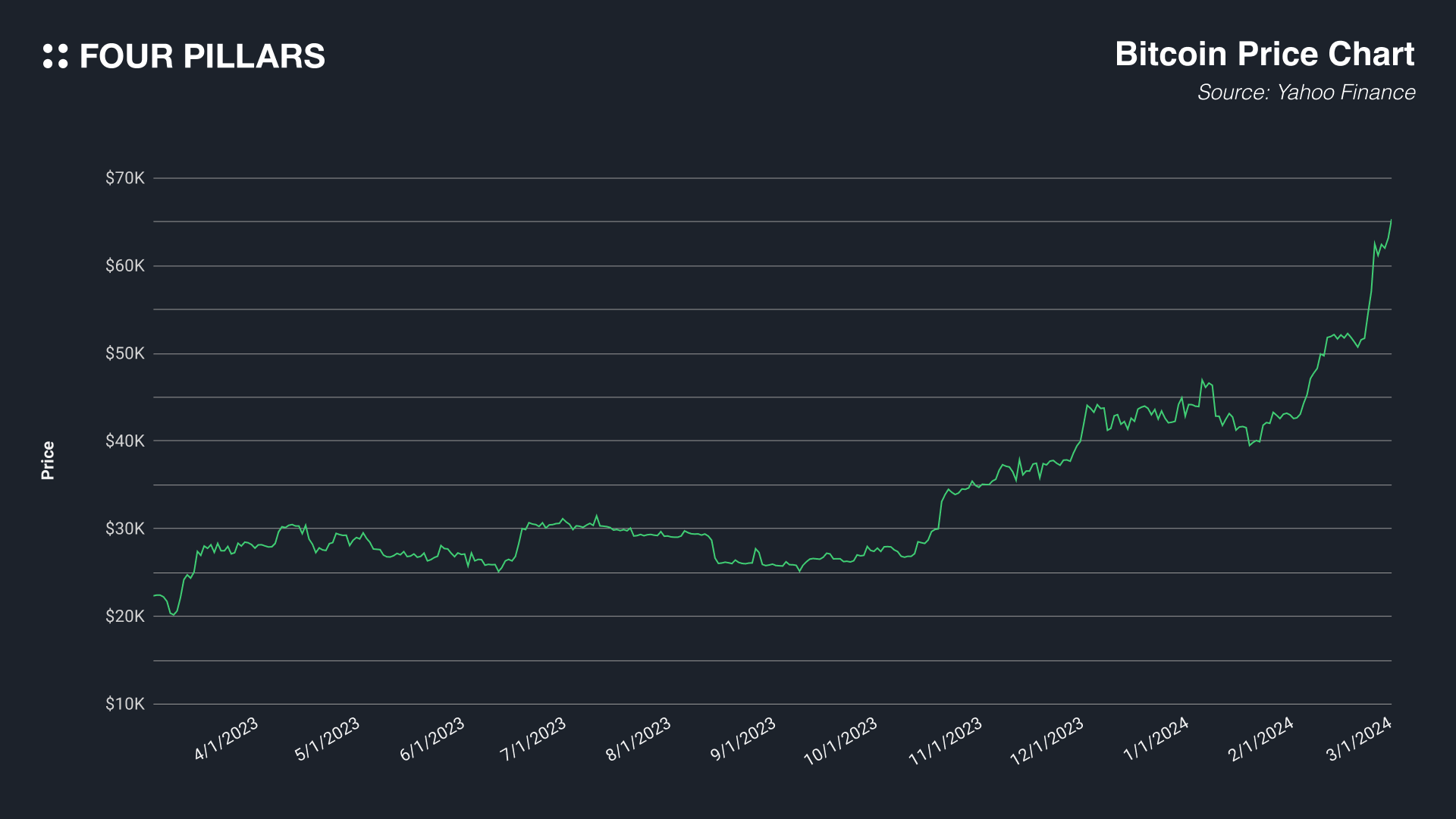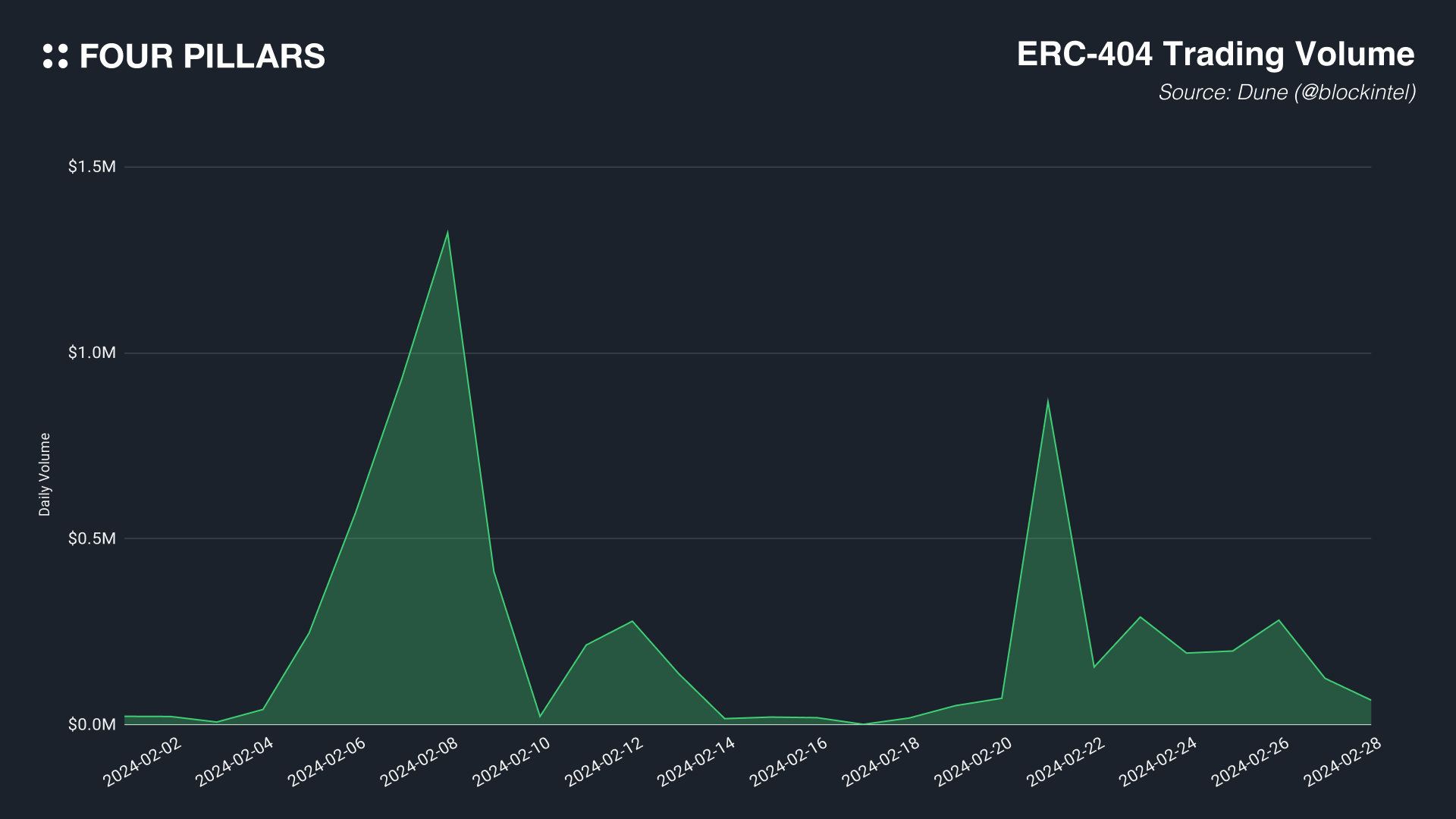

Throughout February, Bitcoin experienced a significant surge, climbing 52.9% from $41,855 to $64,005, according to Binance. While it has yet to surpass its 2021 peak in dollar terms, it has set new record highs in terms of local currencies in countries with both unstable fiat systems, such as Turkey and Argentina, and in major economies like China, Japan, South Korea, and India, indicating a robust price rally. This trend may be partly attributed to the bullish U.S. stock market and notably influenced by the impact of Bitcoin ETFs.

Source: BitMEX Research
In February alone, Bitcoin ETFs saw an influx of approximately $6 billion, with a record single-day inflow of $673.4 million on February 28, surpassing previous records. Global asset management funds, such as Fidelity, have begun incorporating Bitcoin into their portfolios, suggesting a growing trend of Bitcoin adoption in investment strategies.

The Lens Protocol, a Web3 social graph protocol, has transitioned to a permissionless phase, enabling anyone to mint profile NFTs upon paying 10 MATIC tokens. This change led to a surge in daily profile creations from about 130,000 on February 24 to around 190,000 by February 29. However, the protocol's transaction volume has not seen a proportionate increase despite the growth in profile numbers.

Farcaster, an Ethereum-based decentralized social protocol, launched a new feature named "Frames" on January 26, drawing significant attention within the community. Frames allow for the easy integration of interactive services into posts, enabling users to engage in activities such as voting, purchasing tokens, or playing games directly through posts. This feature highlights the composability advantage of blockchain technology, sparking considerable interest. February witnessed various engaging activities on Farcaster, including the purchase of cookies via meme tokens.
The popularity of Farcaster and a surge in meme token values attracted numerous users, with post, reaction, and link volumes on the platform skyrocketing by 3550% in just ten days. However, this surge in activity significantly dwindled by February 29, showing a 77.5% decrease from its peak, though still representing a high level of engagement compared to the pre-Frames launch.

ERC-404, an experimental token standard aiming to fractionalize and liquefy NFTs, combines features of both ERC-20 and ERC-721 standards. It allows users to buy ERC-20 tokens that generate an NFT in their wallet, which is burned if the token quantity falls below one. This facilitates easier buying and selling of fractions of an NFT, offering greater liquidity than traditional NFTs. Initially proposed by the Pandora team, various projects like DeFrogs and Asterix Labs have since utilized ERC-404 for launching NFTs.
ERC-404 drew significant interest in early February, with Pandora's value skyrocketing from $212 on February 2 to $32,838 by February 9. However, the interest in ERC-404 quickly waned, with its trading volume also decreasing rapidly. The future attention and development of ERC-404 remain to be seen.
Movement Labs introduces M2, the first ZK Move-EVM L2 on Ethereum
Dencun is scheduled for mainnet activation at epoch 29696, occurring March 13
ENS collaborates with GoDaddy to link web domains with blockchain names
Uniswap token pumps following governance fee switch proposal
Transak Partners with Visa to Enable Global Crypto Withdrawals
OPNX, the Exchange Built by Founders of Doomed Hedge Fund Three Arrows, Is Shutting Down
Fidelity has a 1-3% bitcoin allocation in their "All-in-One" asset allocation funds in Canada
VanEck launches NFT marketplace and digital assets platform SegMint
Japan seeks to allow certain VCs to invest directly in crypto and Web3 startups
Circle is Discontinuing Support for USDC on the TRON Blockchain
The date for the Dencun Update has been finally confirmed. According to Tim Beiko, the Dencun Update is scheduled to be activated on epoch 29696 (March 13). The most significant feature of the Dencun Update is EIP-4844, which provides rollup networks with a blob space for scalable storage of transaction data. This is expected to significantly reduce transaction fees for rollup users.
Optimism has launched a website to demonstrate the potential reduction in transaction fees. However, since blobs will create a separate market from Ethereum's gas fees, the actual transaction fees can only be calculated once blobs are implemented. The website assumes a Blobgas Base Fee of 4.2 gwei. Applying this assumption shows that the transaction fee for swapping on Velodrome over OP Mainnet could decrease from $0.5254 to $0.0142, a reduction of 97%. Let's wait and see how much transaction fees will be saved when EIP-4844 is applied on March 13. Consequently, tokens from ETH L1, L2 tokens like OP, ARB, MATIC, STRK, and others from RaaS, DA projects should be monitored.
Pavel Durov, the CEO of Telegram, announced that starting in March, Telegram channel owners will be able to receive 50% of their ad revenue in TON tokens on the TON blockchain based on the views. Channel owners can either convert their TON tokens into cash or use them for channel advertisements, thus creating a virtuous cycle. Telegram is the fourth most used messaging app globally, following WhatsApp, WeChat, and Facebook Messenger, with approximately 196M daily active users. This news caused TON's value to surge by 26%, from $2.15 to $2.71. It will be interesting to observe whether this update will actually increase the activity on the TON blockchain in March.
Thanks to Kate for designing the graphics for this article.